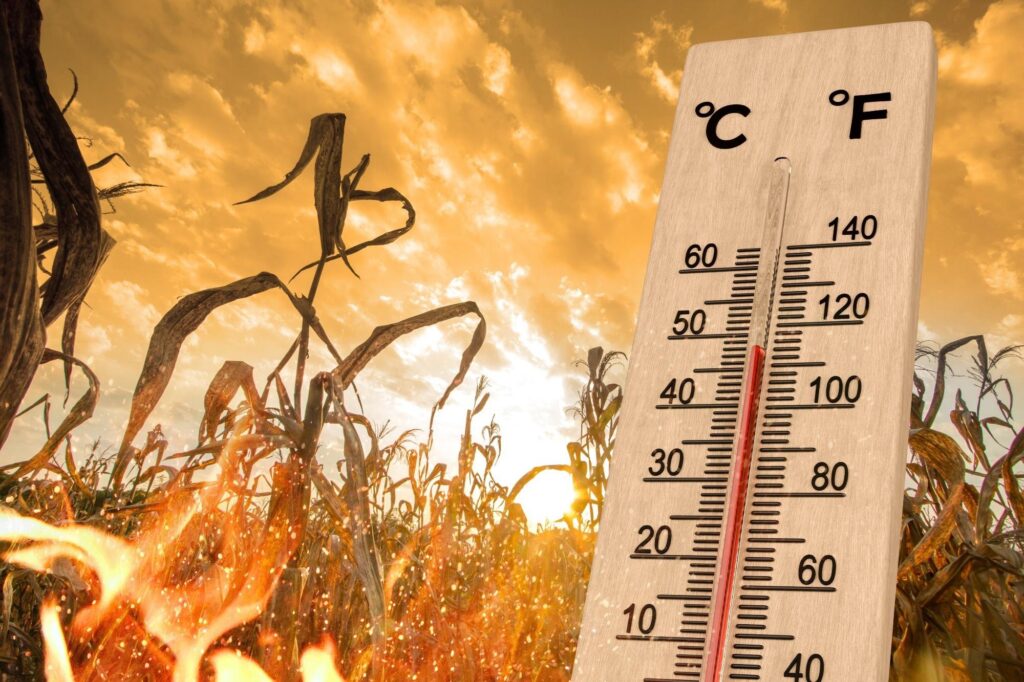As global temperatures continue to rise, extreme heat events are becoming an increasingly common feature of daily life. This emerging reality poses significant long-term health risks that extend far beyond immediate heat-related illnesses. A recent report from PBS highlights how prolonged exposure to higher temperatures is exacerbating chronic conditions, straining healthcare systems, and disproportionately impacting vulnerable populations. As communities worldwide grapple with this new normal, understanding the far-reaching effects of extreme heat on public health has never been more urgent.
Health Impacts of Prolonged Exposure to Extreme Heat on Vulnerable Populations
Vulnerable populations-such as the elderly, children, individuals with pre-existing health conditions, and low-income communities-face disproportionate dangers as record-breaking heatwaves intensify globally. Prolonged exposure to extreme temperatures can exacerbate chronic illnesses like cardiovascular disease, respiratory disorders, and diabetes, often leading to increased hospital admissions and mortality rates. Beyond acute heat strokes, sustained heat stress impairs immune function and aggravates mental health issues, amplifying the silent yet severe toll on those already at risk.
According to recent data, these impacts manifest through multiple pathways:
- Dehydration and electrolyte imbalance – especially harmful for seniors and infants.
- Exacerbation of chronic respiratory issues – due to increased air pollution and pollen loads during heat events.
- Stress on cardiovascular systems – resulting in higher rates of heart attacks and strokes.
- Mental health deterioration – heat is linked to increased anxiety, depression, and even aggression.
- Reduced access to cooling resources – predominantly affecting low-income communities without reliable electricity or AC.
| Population Group | Primary Health Risks | Key Challenges |
|---|---|---|
| Elderly (65+) | Heat stroke, Cardiovascular strain | Limited mobility, medication sensitivity |
| Children (0-14) | Dehydration, Respiratory distress | Lack of awareness, dependency |
| Low-Income Communities | Chronic illness flare-ups, Mental health stress | Poor housing, limited cooling access |
Rising Chronic Illness Rates Linked to Persistent High Temperatures
As global temperatures continue to climb, health experts are observing a worrying surge in chronic illnesses directly associated with persistent exposure to extreme heat. Conditions such as cardiovascular disease, respiratory disorders, and kidney problems have shown marked increases in regions experiencing prolonged heatwaves. This environmental stress exacerbates existing health vulnerabilities, particularly among the elderly and low-income populations. Health systems worldwide are feeling the strain, with hospital admissions rising during heat events due to dehydration, heat stroke, and complications linked to pre-existing conditions.
Key factors contributing to this trend include:
- Extended heatwave durations: More days of extreme heat increase the body’s stress and reduce recovery time.
- Urban heat islands: Cities retain more heat, intensifying exposure risks for urban residents.
- Limited access to cooling: Economic barriers restrict the use of air conditioning and other cooling measures.
- Chronic inflammation: Heat exposure triggers inflammatory responses that worsen chronic diseases.
| Chronic Illness | Heat-Related Risk Increase (%) | Most Affected Demographic |
|---|---|---|
| Cardiovascular Disease | 15% | Seniors (65+) |
| Chronic Kidney Disease | 22% | Outdoor Workers |
| Respiratory Disorders | 18% | Children & Elderly |
Community Strategies and Policy Recommendations to Mitigate Health Risks
Effective community-led interventions are essential as cities grapple with the relentless rise in extreme heat events. Local governments and organizations must prioritize the expansion of urban green spaces and the development of cooling centers accessible to vulnerable populations. Implementing early warning systems tailored to heatwaves, combined with community education campaigns, can empower residents to recognize heat-related symptoms and seek timely assistance. Furthermore, collaboration with healthcare providers to promote routine screening for heat-exacerbated conditions, especially among the elderly and those with chronic illnesses, can dramatically reduce emergency incidents during heat spikes.
Policymakers are urged to incorporate heat resilience into building codes and zoning laws by encouraging heat-reflective materials and enforcing shade requirements in public spaces. Economic incentives for homeowners and businesses to adopt energy-efficient cooling technologies will not only ease individual health burdens but also alleviate the larger strain on power grids during heatwaves. Below is a snapshot of recommended strategies for local governments aiming to minimize heat-related health risks:
| Strategy | Focus Area | Community Impact |
|---|---|---|
| Expand Urban Greenery | Cooling & Air Quality | Reduces heat island effect, improves mental health |
| Develop Heat-Health Early Warning Systems | Public Health & Safety | Increases preparedness and reduces heat illness |
| Strategy | Focus Area | Community Impact |
|---|---|---|
| Expand Urban Greenery | Cooling & Air Quality | Reduces heat island effect, improves mental health |
| Develop Heat-Health Early Warning Systems | Public Health & Safety | Increases preparedness and reduces heat illness |
| Establish Cooling Centers | Vulnerable Populations Support | Provides safe refuge from extreme heat |
| Promote Heat-Resilient Building Codes | Urban Planning & Infrastructure | Enhances long-term community heat resilience |
| Incentivize Energy-Efficient Cooling | Closing Remarks
As extreme heat events become increasingly frequent and severe, understanding their long-term health implications is more critical than ever. This evolving climate reality not only challenges public health systems but also underscores the urgent need for comprehensive adaptation strategies. Addressing these risks requires coordinated action from policymakers, healthcare providers, and communities alike to safeguard vulnerable populations and build resilience against the mounting threats of a warming world. |
